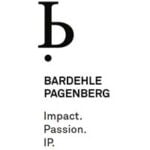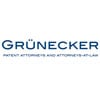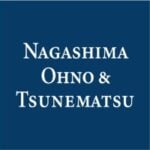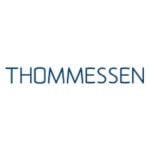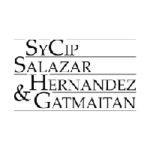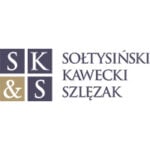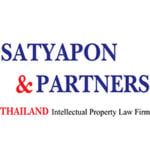-
What is the forum for the conduct of patent litigation?
Sections 56(1) and 59(1) of the Patents Act 1983 (‘Act’) respectively provides that invalidation and infringement proceedings are to be instituted in the ‘Court’, which is defined to mean ‘the High Court, or a Judge thereof’.
Within the commercial division of the High Court of Malaya at Kuala Lumpur, patent actions are generally filed in the specialised Intellectual Property High Court in Kuala Lumpur (‘IP Court’). The establishment of the IP Court in 2007 was to promote uniformity and consistency in the development of IP jurisprudence. The IP Court is regarded as the default forum for patent matters nationwide, given the complexity and technical nature of such disputes. Its jurisdiction is not confined to matters originating in Kuala Lumpur, and cases filed elsewhere may be transferred there on application by either party to ensure that issues of technical complexity are determined by an experienced IP Judge. In R Ramani a/l M Ramalingam v Deluxe Exclusive Lounge Sdn Bhd [2017] 8 MLJ 302, the IP Court declined to transfer a copyright action to the High Court in Johor Bahru despite the underlying events occurring in Johor Bahru, underscoring the objective of centralising specialist IP cases.
The presiding IP Judge is not a technical judge but is supported by expert evidence presented by the expert witnesses called by the parties. The court may also appoint its own independent expert, either on its own motion or on the application of a party, pursuant to Order 40 rule 1(1) of the Rules of Court 2012 (‘ROC’).
Parties may alternatively agree to resolve their disputes through arbitration, which offers confidentiality, procedural flexibility and the ability to consolidate multi-jurisdictional issues. However, an arbitral award binds only the parties and cannot invalidate a Malaysian patent. Litigation in the ‘Court’ therefore remains necessary where broader relief, such as a declaration of invalidity, is required.
-
What is the typical timeline and form of first instance patent litigation proceedings?
Patent litigation at first instance is commenced in the High Court by writ action. The procedure follows the ROC, with pre-trial case management to fix timelines for settling of the pleadings, any interlocutory applications such as application for discovery and tendering of expert evidence. The issues of claim construction, infringement and invalidity are usually dealt with in a single action rather than in separate hearings, and the court commonly hears these issues together. Although it is open to the judge to determine validity first—on the basis that there can be no infringement of an invalid claim—the proceedings themselves are not formally bifurcated.
Issues of liability is generally first determined by the presiding judge with the assessment of damages or accounts of profit to be decided in a separate hearing after the full trial. In other words, once infringement is established yet the quantum of damages requires further evidence—often the case, the plaintiff is entitled to decide whether to claim damages or an account of profits made by the defendant. During the proceedings for assessment of damages or accounts of profits, which is in effect a mini-trial, evidence will be tendered by the plaintiff to prove his losses or the profits made by the defendant. The defendant is entitled to rebut the evidence tendered by calling his witnesses or tendering documentary evidence in support of his case.
Unless the court directs otherwise, damages are normally assessed by the registrar under Order 37 rule 1 of the ROC. In IP matters, and especially in patent litigation, it is common for the assessment to remain with the IP Judge. In Syarikat Faiza Sdn Bhd & Anor v Faiz Rice Sdn Bhd & Anor [2019] 7 MLJ 175, which involved multiple IP causes of action, the judge conducted the assessment, noting that the registrar would not have the same familiarity with the facts and that any assessment by the registrar would be subject to appeal under Order 56 rule 1(1) of the ROC, resulting in further delay and increased cost.
The overall duration of patent litigation proceedings at the first instance is typically between 12 to 18 months, depending on several factors such as the complexity of the technology, the number of claims in dispute, the scope of prior art relied upon for invalidity, availability of the witnesses particularly the expert witnesses, and the extent and complexity of expert testimonies tendered
-
Can interim and final decisions in patent cases be appealed?
Any party aggrieved by a decision of the High Court has the right to appeal to the Court of Appeal on both facts and law. The right to appeal the decision of the court of first instance to the Court of Appeal is automatic. In general, the appellate court will not disturb the trial judge’s findings of fact unless those findings are “plainly wrong” or cannot reasonably be supported by the evidence.
Section 3 of the Courts of Judicature Act 1964 (‘CJA 1964’) defines a ‘decision’ as any judgment, sentence or order, but excludes any ruling made in the course of a trial or hearing that does not finally dispose of the parties’ rights. Order 55 rule 1 of the ROC similarly provides that a decision includes a judgment, order and decree. Accordingly, no appeal lies against a ruling made during a trial or hearing that does not finally determine the rights of the parties. This principle was affirmed by the Federal Court in Asia Pacific Higher Learning Sdn Bhd v Majlis Perubatan Malaysia & Anor [2020] 2 MLJ 1, where the apex court held that a decision is only appealable if it finally disposes of the substantive rights in issue and is not merely an interlocutory ruling made in the course of the trial.
Section 68(1) of the CJA 1964 was amended in 2022 to preclude appeals to the Court of Appeal where the High Court dismisses an application for summary judgment or to strike out a writ or pleading, or allows an application to set aside a judgment in default.
An appeal does not automatically stay enforcement of the High Court’s judgment. A stay may be granted if ‘special circumstances’ are shown, such as where immediate enforcement would render the appeal nugatory. The list for ‘special circumstances’ is non-exhaustive. The application for a stay is usually made first to the High Court and, if refused, the aggrieved party is given the right to appeal to the Court of Appeal. An appeal to the Court of Appeal typically takes about 12 to 18 months to reach disposal.
A further appeal lies to the Federal Court, but only with leave of the court. There is no automatic right of appeal. Leave will be granted if the proposed question of law is of general principle to be decided for the first time or is of public importance such that a decision of the apex court would be to the public advantage. A leave application is typically determined within about a year, and if leave is granted, the substantive appeal generally takes a further 12 to 18 months from the date leave is obtained.
-
Which acts constitute direct patent infringement?
Under section 58 of the Act, direct infringement occurs whenever a person performs in Malaysia any act of ‘exploitation’ of the patented invention as described in section 36(3) of the Act, without the patent owner’s agreement.
Pursuant to section 36(3) of the Act , where the patent is granted for a product, exploitation covers (i) making the patented product; (ii) importing it into Malaysia; (iii) offering it for sale, selling it or using it; and (iv) stocking it for the purpose of sale or use.
Where the patent is granted for a process, exploitation includes (i) using the patented process itself; and (ii) making, importing, offering for sale, selling, using, or stocking any product obtained directly by means of that process.
-
Do the concepts of indirect patent infringement or contributory infringement exist? If so, what are the elements of such forms of infringement?
The Act contains no specific provision on indirect or contributory infringement. However, where several parties are involved in activities that exploit the patent as enumerated in section 36(3) of the Act, each party that carries out any of those acts without the patent owner’s agreement may itself be liable for direct infringement.
In addition, a patentee may bring a civil claim for the tort of conspiracy to injure if it can demonstrate that two or more parties acted in concert with the intent to cause loss through infringing acts.
-
How is the scope of protection of patent claims construed?
The Malaysian courts construe the scope of a patent claim using a purposive approach as established by Catnic Components Ltd & Anor v Hill & Smith Ltd [1982] RPC 183 (HL), asking what a person skilled in the art would understand the patentee to mean by the words of the claim. This approach was affirmed by the Federal Court (apex court of Malaysia) in Spind Malaysia Sdn Bhd v Justrade Marketing Sdn Bhd & Anor [2018] 4 MLJ 34 at para [123]
The purposive approach would eschew a purely literal construction of the claims, which would be too narrow. Thus, a version of an invention aimed at the same technical problem which solves it in similar technical ways, perhaps with similar (but not identical) features, which are termed ‘variants’, may well be covered by the wording of the claim. In Kirin-Amgen v Hoechst Marion Roussel Ltd [2005] RPC 9, Lord Hoffman opined that ultimately in construing a claim, the question to be asked is ‘[w]hat the person skilled in the art have understood the patentee to have used the language of the claim to mean?’ In Catnic Component, the court had considered an equivalent to a patented invention to be convered by the claim. In other words, although something may differ in appearance, form, or even certain technical features, there can be infringement if these amount, in essence, to the embodiment of the same inventive concept and the moditifcaiton do not bring about a material change in the way the variant works.
The crucial issue is how far the court can look away from literal meaning of a claim. The questions have been answered by the UK Courts in the case of Improver v Remington Consumer Products Ltd & Ors [1990] FSR 181 and Actavis UK Ltd & Ors v Eli Lilly & Co. [2017] UKSC 48, [2018] 1 All ER 171. The test formulated by the court in Improver is commonly known as the ‘Improver Test’ (at 189 of the decision) whereas that formulated by the Supreme Court in Actavis is called the ‘Actavis Test’.
The ‘Improver Test’ had been applied by the Malaysian Court of Appeal in Cadware Sdn Bhd v Ronic Corp [2013] 6 MLJ 19 (see para 24 of the judgment), and the High Courts in among others, Kingtime International Ltd & Anor v Petrofac E&C Sdn Bhd [2018] MLJU 1840 and Billion Prima Sdn Bhd & Anor v Nuctech Co Ltd & Anor [2019] MLJU 700.
The ‘Actavis Test’ had been adopted by the Malaysian High Courts in among others, Kingtime International Ltd & Anor v Petrofac E&C Sdn Bhd [2018] MLJU 1840; Merck Sharp & Dohme Corporation & Anor v Hovid Bhd [2022] MLJU 16; Billion Prima Sdn Bhd & Anor v Nuctech Co Ltd & Anor [2019] MLJU 700; and Emerico Sdn Bhd v Maxvigo Solution Sdn Bhd [2020] MLJU 340.
The position on prosecution history estoppel remains unsettled. In Nehemiah Reinforced Soil Sdn Bhd v RSEG Sdn Bhd & Anor [2025] MLJU 1051, the court declined to adopt the doctrine on the basis that it is not recognised under the Patents Act 1983. Conversely, in Winthrop Pharmaceuticals (Malaysia) v Astrazeneca UK Limited [2015] MLJU 2014, the court considered the patent’s prosecution history (the ‘file wrapper’) relevant and persuasive. It is noteworthy that section 33A(3) of the Act, introduced after the Winthrop decision, provides that an officer of the Intellectual Property Corporation of Malaysia (‘MyIPO’) cannot be compelled to produce the patent prosecution file in court, further complicating any potential reliance on prosecution history in claim construction.
-
What are the key defences to patent infringement?
The key defences to patent infringement are as follows:
The defendant may argue that the impugned product or process falls outside the scope of the patent claims. As demonstrated by case law, the Malaysian courts had applied the following tests of infringement of patent depending on the circumstances:
- the ‘essential integers’ test – which requires that the alleged product or process embody every essential element of the claim, without regard to inessential integers;
- the ‘Improver Test’ (from Improver Corp v. Remington Consumer Products Ltd [1990] FSR 181 and applied by the Court of Appeal in Cadware Sdn Bhd v Ronic Corp [2013] 6 MLJ 19)) – which applies to variants and contemplating whether the variant materially affects the way the invention works, whether that lack of effect would have been obvious to a skilled reader at the publication date, and whether the skilled reader would understand that strict compliance with the primary meaning was intended; and
- the ‘Actavis Test’ (from Actavis UK Limited and others v Eli Lilly and Company [2017] UKSC 48) – a reformulation of the Improver questions for non-literal infringement, under which infringement is established if (i) the variant achieves substantially the same result in substantially the same way as the inventive concept, (ii) this would be obvious to a skilled reader at the priority date, and (iii) the skilled reader would not conclude that strict compliance with the literal wording was intended.
The defendant may also challenge the validity of the patent or of the specific claims relied on, pursuant to section 56(2) of the Act. If a patent is declared invalid, no infringement can arise because the rights conferred by a patent are enforceable only so long as the patent remains valid from the date of grant. Common grounds for invalidation under section 56(2) of the Act include lack of novelty, absence of an inventive step, lack of industrial applicability, insufficient disclosure, or that the plaintiff is not the rightful owner of the patent.
Depending on the circumstances, a defendant may also rely on the defence of prior use under section 38(1) of the Act. This provision allows a person to continue exploiting the patented invention if it can be shown that, in good faith and in Malaysia, the person had either (i) already made the product or used the process that is the subject of the claimed invention, or (ii) made serious preparations to do so before the priority date of the patent application. This is a personal right and may not be assigned or transmitted except as part of the prior user’s business.
-
What are the key grounds of patent invalidity?
The key grounds for patent invalidity are set out in section 56(2) of the Act. A patent may be invalidated if any of the following can be established:
(a) what is claimed as an invention is:
- not an ‘invention’ within the meaning of section 12 of the Act;
- excluded from protection as a non-patentable invention under section 13 of the Act;
- excluded from protection under section 31(1) of Act on the ground that the exploitation of the invention would be contrary to public order or morality;
- not patentable because it fails to satisfy one or more of the statutory requirements of sections 11 (patentability), 14 (novelty), 15 (inventive step) and 16 (industrial applicability);
(b) the description or the claim does not comply with the requirements of application under section 23 of the Act;
(c) any drawings which are necessary for understanding the claimed invention have not been furnished; or
(d) the right to the patent does not belong to the person to whom the patent was granted.
It appears that the above are the only grounds for invalidation of a validly granted patent.
-
How is prior art considered in the context of an invalidity action?
Under section 14(2) of the Act, prior art consists of:
(a) everything disclosed to the public, anywhere in the world, by written publication, oral disclosure, use or in any other way before the priority date of the patent application; and
(b) the contents of a domestic patent application having an earlier priority date than the patent application referred to in (a) above to the extent that such contents are included in a published application under section 33D based on that earlier application.
However, sections 14(3) and 14(4) of the Act exclude certain disclosures from being considered as prior art. Specifically, information will be disregarded if:
- it was disclosed within one year preceding the filing date of the patent application and the disclosure arose from acts committed by the applicant or predecessor in title;
- it was disclosed within one year preceding the filing date due to an abuse of the applicant’s rights;
- it was disclosed by way of a pending application to register the patent in the United Kingdom Patent Office as at the date of coming into force of the Act; or
- the disclosure concerns a known substance or composition for use in a method of treatment by surgery, therapy or diagnosis.
In YKL Engineering Sdn Bhd v Sungei Kahang Palm Oil Sdn Bhd & Anor [2022] 6 MLJ 1, the Federal Court held that for prior art to anticipate a claimed invention, there must be an enabling disclosure. In other words, the prior art must disclose sufficient information to enable a person skilled in the art to reproduce or duplicate the patented invention.
For the purpose of assessing novelty, each item of prior art must be evaluated independently. A single reference that discloses all essential features of the claimed invention will destroy novelty. In contrast, when assessing inventive step, it is permissible to combine multiple prior art references, a process commonly referred to as ‘mosaicing’, provided that a person skilled in the art would reasonably be expected to make such a combination.
-
Can a patentee seek to amend a patent that is in the midst of patent litigation?
Section 79A(3) of the Act prohibits the Registrar of Patents (‘Registrar’) from recording or registering any amendment to a patent while there are pending court proceedings in which the validity of the patent may be in issue.
However, a patentee is not precluded from seeking to amend a patent in the course of litigation. The Federal Court in Merck Sharp & Dohme Corp & Anor v Hovid Bhd [2019] 12 MLJ 66 clarified that such amendments may be applied for, but they take effect only after the conclusion of the litigation.
Under section 79A(1) of the Act, a patentee may request the Registrar to amend the description, claims, drawings or any other document associated with the patent to correct a clerical error, an obvious mistake, or for any other reason acceptable to the Registrar. Where the amendment necessitates a substantive review, the patentee must file a request for re-examination under section 79A(1A) of the Act.
The Registrar will not allow an amendment that would (i) introduce matter extending beyond the original disclosure before amendment, or (ii) extend the protection conferred at the time of grant, as provided under section 79A(2) of the Act.
-
Is some form of patent term extension available?
The duration of a patent is 20 years from the filing date of the application or 15 years from the date of grant, whichever is longer. There is no provision under the Act for any form of patent term extension.
-
How are technical matters considered in patent litigation proceedings?
In patent litigation, the court is assisted by expert witnesses on technical issues arising from the invention, prior art, or claim construction. These experts provide the court with the necessary scientific or technical context to evaluate the evidence, particularly where the subject matter lies outside judicial experience.
An expert is often referred to as a person ordinarily skilled in the art (‘POSITA’). As observed in Fukuyama Automation Sdn Bhd v Xin Xin Engineering Sdn Bhd & Ors [2015] 9 MLJ 823, such a person:
- possesses the common general knowledge of the relevant art;
- has a practical interest in the subject matter or is likely to act on the directions given in the patent; and
- is reasonably intelligent but ‘unimaginative’, wishing to make the directions in the patent work.
While expert evidence is almost always valuable, the court is not bound by it. The Federal Court in SKB Shutters Manufacturing Sdn Bhd v Seng Kong Shutter Industries Sdn Bhd & Anor [2015] 6 MLJ 293 explained that the function of an expert is ‘to educate the court in technology,’ and that such experts ‘come as teachers, as makers of the mantle for the court to don.’ The expert need not approximate the POSITA; rather, their role is to assist the court in understanding the technical background, terminology, and common general knowledge so the court can construe the claims and evaluate evidence independently.
Parties typically engage their own experts, who may give both written and oral evidence. Under Order 40A rule 3 of the ROC, expert evidence must be presented in a written report, signed and affirmed by affidavit. The opposing party may, with leave of the court, submit written questions to the expert for clarification pursuant to Order 40A rule 4, and the expert’s written answers form part of the report. Experts are also subject to cross-examination during trial.
Additionally, under Order 40 rule 1(1) of the ROC, the court may, on its own motion or at the request of a party, appoint an independent expert to assist in resolving complex technical issues.
An expert’s overriding duty is to the court, not to the party who engaged or remunerated them. This duty, expressly stated in Order 40A rule 2 of the ROC, requires the expert to provide impartial, objective assistance within their field of expertise. The expert’s report must also include a declaration acknowledging this duty.
-
Is some form of discovery/disclosure and/or court-mandated evidence seizure/protection (e.g. saisie-contrefaçon) available, either before the commencement of or during patent litigation proceedings?
The Malaysian courts have broad case management powers to ensure that patent litigation proceedings are conducted efficiently and fairly. Under Order 34 rule 2 of the ROC, the court may, during pre-trial case management, issue directions for the filing of pleadings and bundles of documents intended to be relied upon at trial. The court may also require the parties to file a statement of agreed facts and a statement of issues to be tried, to narrow the scope of the dispute and facilitate an expeditious trial.
After the close of pleadings, any party may apply for discovery of documents in the other party’s possession, custody or power under Order 24 rule 3 of the ROC. Discovery is available at any stage of proceedings but is rarely granted before the close of pleadings, since the court must first be guided by the issues raised therein when determining whether documents sought are relevant. See the case of Malaysia Debt Ventures v Platinum Techsolve Sdn Bhd & Ors [2020] MLJU 1421.
The court may also order pre-action discovery under Order 24 rule 7A of the ROC to assist a prospective plaintiff in determining whether there is a viable claim against an intended defendant. However, the threshold for such applications is high, as the court will not permit a ‘fishing expedition’. To succeed, the applicant must show that the documents sought are necessary to identify the proper parties or to determine whether a cause of action exists, and that the respondent is likely to have the documents in their possession, custody or power
Aside from discovery, a party may serve interrogatories, a series of written questions directed to the opposing party at any time under Order 26 of the ROC. The court’s leave is required if pleadings have closed. Interrogatories are designed to elicit admissions or evidence of material facts in advance of trial, to clarify matters in dispute and to assist in the fair and economical resolution of proceedings. See the case of Aarti a/p Telak Chan v Previnder Singh a/l Pretam Singh [2018] MLJU 6.
A party in patent litigation proceedings may also apply for Anton Piller orders to preserve evidence where there is a real risk that evidence may be destroyed by the other party before trial.
-
Are there procedures available which would assist a patentee to determine infringement of a process patent?
There is a statutory presumption under section 36(4) of the Act that where a patent has been granted in respect of a process for obtaining a product, the same product produced by a person other than the patent owner or licensee shall, unless the contrary is proven, be deemed in any proceedings to have been obtained by that process. Such presumption was applied in Sanofi-Aventis (M) Sdn Bhd & Anor v Fresenius Kabi (M) Sdn Bhd & Anor [2011] MLJU 1538.
To rebut this presumption, the defendant must adduce evidence showing that the product was produced by a process different from the patented one. However, section 36(5) of the Act provides that the defendant cannot be compelled to disclose any manufacturing or commercial secrets if the court is satisfied that such disclosure would be unreasonable, unnecessary, or prejudicial to those secrets.
-
Are there established mechanisms to protect confidential information required to be disclosed/exchanged in the course of patent litigation (e.g. confidentiality clubs)?
Parties may apply to the court for a protective order or sealing order to preserve the confidentiality of information disclosed in the course of patent litigation proceedings. Such orders are granted under the court’s inherent jurisdiction pursuant to Order 92 rule 4 of the ROC, and operate as injunctions imposing obligations on the parties to prevent the misuse or unauthorised disclosure of sensitive information. See the case of Kingtime International Ltd & Anor v Petrofac E&C Sdn Bhd [2020] 11 MLJ 141.
A protective order may be made by consent of the parties, or, if contested, following a hearing on the merits of the application. In determining whether to grant such an order, the court typically balances three competing considerations:
- the public interest in ensuring that all relevant evidence is before the court for a just determination of the case;
- the parties’ right to have access to relevant documents to properly understand and meet the case against them; and
- the need to protect the disclosing party’s proprietary or confidential information.
When granting a protective order, the court may impose conditions tailored to the circumstances of the case. These may include:
- redaction of information not relevant to the dispute;
- restricting access to authorised individuals only (similar in function to a confidentiality club);
- exempting protected information from electronic filing to prevent unauthorised access; and
- conducting hearings or portions of hearings in camera, excluding unauthorised persons.
These mechanisms are intended to strike a balance between the need for openness in judicial proceedings and the protection of commercially sensitive information that may be disclosed during patent litigation.
-
Is there a system of post-grant opposition proceedings? If so, how does this system interact with the patent litigation system?
A system of post-grant opposition proceedings was introduced through section 55A of the Act, as part of the Patents (Amendment) Act 2022. The procedural framework for these proceedings is set out in regulations 43A to 43U of the Patents Regulations 1986. These provisions are scheduled to come into force on 31 December 2025.
Under section 55A(1) of the Act, any interested person, including the Federal Government and State Governments, may, within six months from the date of publication of the grant of a patent, file a Notice of Opposition with the Registrar, provided that no court proceedings concerning the same patent are pending. The opposition must be based on one or more of the limited statutory grounds that mirror the invalidation grounds under section 56(2)(a) to (c) of the Act, namely:
(a) what is claimed as an invention is:
- not an ‘invention’ within the meaning of section 12 of the Act;
- excluded from protection as a non-patentable invention under section 13 of the Act;
- excluded from protection under section 31(1) of Act on the ground that the exploitation of the invention would be contrary to public order or morality;
- not patentable because it fails to satisfy one or more of the statutory requirements of sections 11 (patentability), 14 (novelty), 15 (inventive step) and 16 (industrial applicability);
(b) the description or the claim does not comply with the requirements of application under section 23 of the Act; and
(c) any drawings which are necessary for understanding the claimed invention have not been furnished.
At the conclusion of the opposition, the Registrar may decide whether to maintain the patent, maintain the patent with amendment or invalidate the patent. The Registrar’s decision is subject to appeal to the High Court under section 88 of the Act. If the Registrar decides to maintain or amend the patent, no separate invalidation proceedings may be instituted by the same interested person under section 56, except by way of a counterclaim in infringement proceedings or as part of an appeal under section 88.
The new section 56A further regulates the relationship between opposition and invalidation proceedings. An interested person who has filed a notice of opposition may not institute invalidation proceedings before the opposition is decided, unless (i) both parties agree that the invalidation proceedings may proceed before the court; or (ii) the interested person is named as a defendant in infringement proceedings. In either case, before commencing invalidation proceedings, the interested person must notify the Registrar of their intention and withdraw the opposition notice.
-
To what extent are decisions from other fora/jurisdictions relevant or influential, and if so, are there any particularly influential fora/jurisdictions?
Decisions from foreign jurisdictions are not binding on Malaysian courts but are often treated as highly persuasive, particularly in intellectual property matters which share a strong international dimension. The Malaysian courts recognise the value of maintaining consistency with international jurisprudence, especially in the context of patent law where harmonisation of principles and practices is desirable. See the case of Merck Sharp & Dohme Corp & Anor v Hovid Bhd [2019] 12 MLJ 66.
Foreign decisions are particularly persuasive in two circumstances: (i) where no local precedent exists on a relevant point of law; and (ii) where the foreign equivalent of the patent in suit has been the subject of adjudication in another jurisdiction. In such cases, the reasoning of the foreign court, while not determinative, is often considered to ensure coherence and predictability in the treatment of similar subject matter across jurisdictions.
As Malaysia is a common law jurisdiction, decisions from other Commonwealth countries carry significant persuasive weight. Where provisions of the Act have been adopted from, or closely resemble, the legislation of another jurisdiction, the corresponding foreign decisions interpreting those provisions are typically accorded greater persuasive value.
-
How does a court determine whether it has jurisdiction to hear a patent action?
The jurisdiction of the Malaysian courts in patent matters is confined to patents granted or applied for under the Act and registered with the Intellectual Property Corporation of Malaysia (MyIPO). Accordingly, Malaysian courts do not have jurisdiction to determine questions of infringement or validity concerning foreign patents that have not been filed or granted in Malaysia.
There are, to date, no reported Malaysian cases addressing the grant of an anti-suit injunction in the context of foreign patent infringement or validity proceedings. However, the court is empowered to grant such injunctions under sections 52(3)(e) and 54(a) of the Specific Relief Act to prevent a multiplicity of judicial proceedings.
-
What are the options for alternative dispute resolution (ADR) in patent cases? Are they commonly used? Are there any mandatory ADR provisions in patent cases?
Alternative dispute resolution (‘ADR’) mechanisms such as mediation and arbitration are available for resolving patent-related disputes in Malaysia, although their use remains relatively limited compared to court litigation.
There are no mandatory ADR provisions under the Act or the ROC specifically applicable to patent disputes. However, parties are encouraged to explore settlement or mediation at the pre-trial case management stage, where the court may invite them to consider ADR pursuant to Order 34 rule 2(2) of the ROC. Court-assisted mediation is conducted by a judge, who may also be the trial judge. In practice, however, the parties often jointly nominate another judge to conduct the mediation.
Arbitration is likewise available, particularly where the parties have entered into agreements containing arbitration clauses (for example, licensing, joint venture, or research collaboration agreements). While disputes relating to contractual rights and obligations under such agreements are arbitrable, issues concerning patent validity are not, as the power to revoke or invalidate a patent is conferred exclusively on the High Court under section 56 of the Act.
-
What are the key procedural steps that must be satisfied before a patent action can be commenced? Are there any limitation periods for commencing an action?
The ROC do not prescribe any mandatory pre-action conduct specific to patent litigation proceedings. However, before commencing an action, it is prudent for a prospective plaintiff to assess the allegedly infringing product or process against the relevant patent claims, and to consider any potential defences that may be raised, including challenges to the patent’s validity. It is common practice for prospective plaintiffs to obtain an expert opinion in the relevant field of art to evaluate these issues before instituting proceedings.
While there is no legal requirement to issue a pre-action demand or notice, it is usual and advisable to do so. The failure to issue such a notice may be taken into account by the court when determining costs, particularly if litigation could reasonably have been avoided. A pre-action notice should, however, be dispensed with where urgency exists or where giving notice would defeat the purpose of the intended relief—for example, in applications for Anton Piller orders (search and seizure) or Mareva injunctions (asset freezing).
Under section 59(2) of the Act, an infringement action must be instituted within six years from the date of the infringing act.
-
Which parties have standing to bring a patent infringement action? Under which circumstances will a patent licensee have standing to bring an action?
Under section 59(1) of the Act, the patent owner has the exclusive right to institute proceedings for patent infringement.
However, section 61 of the Act extends standing to certain beneficiaries, which include:
- a licensee, unless the licence agreement expressly excludes or modifies this right; and
- a beneficiary of a compulsory licence granted under section 51 of the Act.
A beneficiary may request the patent owner to initiate infringement proceedings. If the patent owner refuses or fails to do so within three months from the receipt of the request, the beneficiary may institute the proceedings in their own name, after notifying the patent owner of their intention to do so. The patent owner retains the right to join as a party to such proceedings.
Notwithstanding the three-month requirement, section 61(4) of the Act empowers the court to grant an interim injunction at the request of the beneficiary to prevent or restrain infringement, if the beneficiary can show that immediate action is necessary to avoid substantial damage.
-
Who has standing to bring an invalidity action against a patent? Is any particular connection to the patentee or patent required?
Under section 56(1) of the Act, invalidation proceedings may only be instituted by an ‘aggrieved person’.
The term ‘aggrieved person’ has been liberally construed by the Malaysian courts to encompass a broad range of parties who may be adversely affected by the existence of a patent. In IEV International Pty Ltd v Sadacharamani a/l Govindasamy [2008] 2 MLJ 754, it was held that the phrase carries no technical meaning and should include anyone who would be or in respect of whom there is a reasonable possibility of being disadvantaged in a legal or practical sense by the continued registration of the patent.
Similarly, in Iradar Sdn Bhd v Nutech Company Ltd & Anor [2016] MLJU 1248, the High Court held that a person whose rights, interests, business, trading, or operations are adversely affected or prejudiced by a registered patent qualifies as an aggrieved person.
The scope of this concept was further extended in Merck Sharp & Dohme Corp & Anor v Hovid Bhd [2017] MLJU 77, where the court recognised that a defendant in infringement proceedings is by definition an aggrieved person, as the outcome of the infringement claim directly affects their legal and commercial interests.
-
Are interim injunctions available in patent litigation proceedings?
The court has the power to grant interim injunctions in patent litigation proceedings. In determining whether to grant an interim injunction, the court consistently apply the principles as enunciated in Keet Gerald Francis Noel John v Mohd Noor Bin Abdullah & Ors [1995] 1 MLJ 193 (re-stated the test in American Cyanamid Co v Ethicon Ltd [1975] AC 396), which require consideration of the following:
- Whether there are bona fide serious issues to be tried;
- Whether damages would not be an adequate remedy if the applicant succeeds at trial; and
- Whether the balance of convenience lies in granting the injunction sought.
An interim injunction application is made by notice of application supported by affidavit evidence. In cases of urgency, the application may be made ex parte, and in practice, is accompanied by a certificate of urgency explaining why immediate or secret relief is necessary to preserve the applicant’s rights. The applicant must demonstrate that there is a real need for urgency or confidentiality.
In ex parte applications, the applicant is under a strict duty of full and frank disclosure of all material facts that could influence the court’s decision to grant the injunction, including facts adverse to the applicant’s case. Failure to comply with this duty may result in the injunction being discharged and costs being awarded against the applicant.
Under Order 29 rule 2(2B) of the ROC, an ex parte interlocutory injunction automatically lapses at the end of 21 days from the date of grant, unless revoked or set aside before then. When granting the order, the Court will fix a date to hear the application inter partes within 14 days from the date of the order.
In practice, interim injunctions are not commonly granted in patent cases due to the complexity of the subject matter and the court’s caution in restraining commercial activities before trial. However, where a strong prima facie case of infringement is shown and irreparable harm is likely, the courts have been prepared to grant such relief. An interim injunction was granted by the High Court in Aventis Farma Sa (M) Sdn Bhd & Anor v Rohibul Sabri bin Abas @ Megat (t/a as Dabur Enterprise) & Anor [2008] 3 MLJ 451.
Although applicants are generally required to provide an undertaking as to damages, this requirement is not absolute. The court retains discretion to dispense with or modify the undertaking, though in patent cases, where the patent’s validity may later be challenged, an undertaking would likely be required to compensate the defendant in the event the injunction is found to have been wrongly granted.
-
What final remedies, both monetary and non-monetary, are available for patent infringement? Of these, which are most commonly sought and which are typically ordered?
Under section 60 of the Act, if the patent owner proves that an infringement has been committed or is being committed, the court shall:
- award damages to compensate the patentee for loss suffered;
- grant an injunction to restrain further infringement; and
- grant any other legal remedy deemed appropriate.
Where imminent infringement is established, the court may also grant an injunction to prevent such infringement together with other ancillary relief.
In practice, the winning party will be required to elect between two monetary remedies – either damages for losses suffered or an account of profits representing the defendant’s gains but not both. The assessment of quantum is often deferred to a separate stage after the determination of liability.
The court also has discretion to grant non-monetary remedies, which may include delivery up or destruction of infringing goods or materials used in the infringement, and declaratory relief such as a declaration of validity and infringement.
-
On what basis are damages for patent infringement calculated? Is it possible to obtain additional or exemplary damages? Can the successful party elect between different monetary remedies?
The general principle governing the assessment of damages in intellectual property cases is to place the successful plaintiff in the same position as if the infringement had not occurred. This principle was affirmed by the Federal Court in Taiping Poly (M) Sdn Bhd v Wong Fook Toh (t/a Kong Wah Trading Co) & Ors [2018] Supp MLJ 312.
As discussed above, the winning party is entitled to elect whether to claim for damages for losses suffered or an account of the profits made by the defendant. To enable an informed choice, the court has discretion to order post-trial discovery of the defendant’s document including but not limited to their financial records. An order for post-trial discovery was made in Billion Prima Sdn Bhd & Anor v Nuctech Company Limited & Anor [2020] MLJU 135 and Kingtime International Ltd & Anor v Petrofac E&C Sdn Bhd [2020] 11 MLJ 141.
Although the Act does not expressly provide for additional or exemplary damages, in contrast to the Copyright Act 1987, the court has the discretion to order such damages if deemed appropriate by virtue of the residual phrase ‘any other legal remedy’ in sections 60(1) and 60(2) of the Act. In Kendek Products Sdn Bhd v Dip Chan Manufacturing Sdn Bhd [2024] MLJU 159, the High Court ordered that additional and exemplary damages be assessed following a finding of infringement.
-
How readily are final injunctions granted in patent litigation proceedings?
Sections 60(1) and (2) of the Act provide that the court ‘shall’ grant an injunction to prevent further infringement or imminent infringement of the patent. In practice, the grant of a permanent injunction is almost automatic once infringement has been established, as the patent owner’s exclusive right to exploit the patent would otherwise be undermined if the infringer were permitted to continue their infringing act.
Although the provisions employ the word ‘shall’, suggesting that the grant of an injunction is mandatory, the High Court in Billion Prima Sdn. Bhd. & Anor v Nuctech Company Limited & Anor [2019] MLJU 700 held that the court retains discretion sections 50, 52 [Illustration (r)] and 53 of the Specific Relief Act 1950 (“SRA”) to refuse an injunction in appropriate circumstances as injunctive relief remains an equitable remedy and therefore discretionary.
In that case, the court declined to grant a perpetual injunction against the Royal Malaysian Customs Department and the Government of Malaysia, relying on section 29 of the Government Proceedings Act 1956 and section 54(d) of the SRA. Further, the court found that the patent owners had acted unlawfully and inequitably in procuring evidence of infringement.
Nevertheless, the court affirmed that the patent owner remained entitled to monetary compensation, whether by way of damages or an account of profits, in lieu of a perpetual injunction. Where the patent owner has previously licensed the patented invention to third parties, the court may assess damages based on the royalty or license fee charged by the patent owner – see Asia File Products Sdn. Bhd. v Brilliant Achievement Sdn. Bhd. & Ors [2019] MLJU 1342.
Conversely, in Chow Chuan Fat v Yeo Chai Seng & Ors [2018] MLJU 914, the High Court invoked sections 51(2), 52(1) and illustration (r) to section 52 of the SRA, and granted a perpetual injunction restraining the other parties in the suit from interfering with the patent owner’s exclusive rights notwithstanding that the infringement claim was dismissed on the ground of issue estoppel.
-
Are there provisions for obtaining declaratory relief, and if so, what are the legal and procedural requirements for obtaining such relief?
The court has jurisdiction to grant declaratory relief under section 41 of the Specific Relief Act 1950, Order 15 rule 16 of the ROC 2012, and/or the court’s inherent jurisdiction. Additionally, the Act specifically provides for certain types of declarations, namely a declaration of invalidity under section 56(3) and a declaration of non-infringement under section 62.
Under section 62(1) of the Act, any interested person may institute proceedings against the patent owner seeking a declaration that the performance of a specified act does not constitute patent infringement. The term ‘interested person’ is not defined in the Act.
Where infringement proceedings have already been commenced concerning the same act, section 62(4) bars a defendant from instituting separate proceedings for a declaration of non-infringement. However, under section 62(5), a party may combine a declaration of non-infringement with invalidation proceedings, unless such invalidation is raised as a counterclaim within existing infringement proceedings. This position was illustrated in Intercontinental Specialty Fats Sdn Bhd v Asahi Denka Kogyo KK [2000] 4 MLJ 775 and Nehemiah Reinforced Sdn Bhd v Patrick Cyril Augustine & Anor [2012] 9 MLJ 112, where the plaintiff in those cases sought both declarations of invalidity and non-infringement.
-
What are the costs typically incurred by each party to patent litigation proceedings at first instance? What are the typical costs of an appeal at each appellate level?
Order 59 rule 2(2) of the ROC confers on the court a wide discretion in exercising its powers on the award of costs, which include fees, charges, disbursements, expenses and remuneration.
At first instance, one of the most significant costs in patent litigation is the appointment of expert witnesses, commonly referred to as persons ordinarily skilled in the art (POSITA). The cost of such experts can be substantial, depending on their level of technical expertise and the complexity of the subject matter. Other notable cost components include professional fees for solicitors and counsel, and the expenses involved in document discovery and trial preparation.
The general rule is that costs follow the event, meaning that they are awarded to the successful party unless there are extenuating circumstances justifying a departure from that rule.
In assessing the amount of costs payable, the court will have regard to all relevant circumstances, including:
- the complexity of the matter and the difficulty or novelty of the questions involved;
- the skill, specialised knowledge and responsibility required of, and the time and labour expended by, solicitors and counsel;
- the number and importance of documents involved; and
- the importance of the matter to the parties.
The court may also take into account additional considerations such as:
- whether there was any offer of contribution or settlement under Order 22B of the ROC;
- the conduct of the parties, both before and during the proceedings;
- any attempts to resolve the matter by mediation or other forms of ADR; and
- the extent to which the parties have complied with any relevant pre-action protocol or practice direction issued by the Registrar.
In appropriate cases, the court may make no order as to costs. For instance, this may occur where a party’s claim is only partially successful (see the case of Asia File Products Sdn Bhd v Brilliant Achievement Sdn Bhd & Ors [2019] MLJU 1342), or where the successful party has acted unlawfully or inequitably in procuring evidence (see the case of Billion Prima Sdn Bhd & Anor v Nuctech Company Limited & Anor [2019] MLJU 700).
At the appellate level, the same principles apply. The quantum of costs awarded will depend on the complexity and importance of the issues raised on appeal. In cases involving issues of public interest or novel questions of law, it is not uncommon for the Federal Court (Malaysia’s apex court) to make no order as to costs, even where the appeal is dismissed. For example, in YKL Engineering Sdn Bhd v Sungei Kahang Palm Oil Sdn Bhd & Anor [2022] 6 MLJ 1, the Federal Court made no order as to costs although seven novel questions were raised for its determination.
-
Can the successful party to a patent litigation action recover its costs?
The successful party in a patent litigation action is generally entitled to recover its costs, subject to the discretion of the court under Order 59 of the ROC.
There are two principal bases for the assessment of costs:
(a) Standard basis – Under Order 59 rule 16(3), the court shall allow a reasonable amount in respect of all costs reasonably incurred, and any doubt as to whether costs were reasonably incurred or were reasonable in amount shall be resolved in favour of the paying party. This is the default basis for assessment.
(b) Indemnity basis – Under Order 59 rule 16(4), all costs shall be allowed except insofar as they are unreasonably incurred or unreasonable in amount, and any doubt shall be resolved in favour of the receiving party.
Costs on an indemnity basis are exceptional and typically awarded only where the losing party’s conduct warrants judicial censure — for example, where the action was filed in bad faith, was hopeless, or the conduct of the party was highly unreasonable or against moral probity (see the case of Talam Corporation Berhad & Anor v Bangkok Bank Berhad & Anor [2015] MLJU 2369).
The recoverable costs include court fees, solicitors’ and counsel’s fees, disbursements, experts’ fees, and other litigation expenses. Typically, the amount recovered on a standard basis represents only a portion of the total actual costs incurred — often estimated between 50% to 70%, depending on the complexity of the matter and reasonableness of the costs claimed.
The court may also consider any offer to settle made under Order 22B of the ROC, which codifies the principles from Calderbank v Calderbank [1975] 3 All ER 333, CA. An offer to settle is deemed to be an offer of compromise made without prejudice save as to costs. Although the offer must made using the prescribed form (i.e. Form 34), there is no requirement for it to be filed into court. Where a defendant’s offer to settle is not accepted and the plaintiff subsequently obtains a judgment not more favourable than the terms of the offer, the plaintiff is entitled to costs up to the date of the offer, while the defendant is entitled to costs thereafter.
Under Order 23 of the ROC, the court has the discretion to order security for costs to ensure that a successful defendant can recover costs if the plaintiff is unable to pay. Security may also be ordered against a non-party if it is just to do so.
While residence outside the jurisdiction (Order 23 rule 1(1)(a)) is a common basis for such an order, it is not automatic. The court will consider factors including:
- whether the plaintiff’s claim is bona fide and has reasonable prospects of success;
- whether the application for security is being used oppressively to stifle a genuine claim;
- whether the plaintiff’s lack of means results from the defendant’s conduct; and
- whether any payment into court has been made (Order 22A rule 5(1)).
-
What are the biggest patent litigation growth areas in your jurisdiction in terms of industry sector?
Based on reported Malaysian decisions, patent litigation has been most active in the mechanical, pharmaceutical, and oil & gas sectors. These industries consistently appear in disputes concerning both patent validity and infringement. Given this trend, we expect continued growth in litigation arising from these sectors, driven by sustained innovation, high commercial value, and ongoing investment in these technologies.
-
What do you predict will be the most contentious patent litigation issues in your jurisdiction over the next twelve months?
The coming into force of the Patents (Amendment) Act 2022 provisions introducing post-grant opposition proceedings is expected to generate significant procedural and substantive disputes. In particular, questions are likely to arise regarding the timing, scope, and interaction between opposition proceedings before MyIPO and invalidation actions before the High Court. Appeals to the High Court from decisions of the Registrar in opposition proceedings are anticipated to form one of the key themes in Malaysian patent litigation over the next year.
In parallel, with the rapid development of artificial intelligence, fintech, and Internet of Things (IoT) technologies, disputes are expected to emerge over the patentability of computer-implemented inventions under the Act.
-
What are the biggest challenges and opportunities confronting the international patent system?
The international patent system continues to face the challenge of reconciling territorial patent rights with the increasingly borderless nature of innovation. As research and commercialisation activities become global, inconsistencies in patentability standards, examination quality and enforcement mechanisms among jurisdictions create uncertainty for applicants and investors. The high cost and complexity of pursuing multi-jurisdictional protection also remain key obstacles, particularly for small and medium-sized enterprises.
Another emerging challenge lies in adapting existing legal frameworks to rapidly developing technologies such as artificial intelligence, biotechnology, and quantum computing. Questions around inventorship, data ownership, and the eligibility of computer-implemented or algorithm-based inventions will likely test the boundaries of the patent system in the coming years.
At the same time, initiatives such as the Patent Cooperation Treaty (PCT), the ASEAN Patent Examination Co-operation (ASPEC) programme, and ongoing efforts by WIPO to streamline digital filing and data exchange offer significant opportunities. These initiatives aim to promote procedural harmonisation, improve examination efficiency, and reduce duplication of effort among patent offices. Greater international cooperation, transparency, and data-driven examination practices will strengthen confidence in the patent system and enhance its role in encouraging innovation and technology transfer worldwide.
Malaysia: Patent Litigation
This country-specific Q&A provides an overview of Patent Litigation laws and regulations applicable in Malaysia.
-
What is the forum for the conduct of patent litigation?
-
What is the typical timeline and form of first instance patent litigation proceedings?
-
Can interim and final decisions in patent cases be appealed?
-
Which acts constitute direct patent infringement?
-
Do the concepts of indirect patent infringement or contributory infringement exist? If so, what are the elements of such forms of infringement?
-
How is the scope of protection of patent claims construed?
-
What are the key defences to patent infringement?
-
What are the key grounds of patent invalidity?
-
How is prior art considered in the context of an invalidity action?
-
Can a patentee seek to amend a patent that is in the midst of patent litigation?
-
Is some form of patent term extension available?
-
How are technical matters considered in patent litigation proceedings?
-
Is some form of discovery/disclosure and/or court-mandated evidence seizure/protection (e.g. saisie-contrefaçon) available, either before the commencement of or during patent litigation proceedings?
-
Are there procedures available which would assist a patentee to determine infringement of a process patent?
-
Are there established mechanisms to protect confidential information required to be disclosed/exchanged in the course of patent litigation (e.g. confidentiality clubs)?
-
Is there a system of post-grant opposition proceedings? If so, how does this system interact with the patent litigation system?
-
To what extent are decisions from other fora/jurisdictions relevant or influential, and if so, are there any particularly influential fora/jurisdictions?
-
How does a court determine whether it has jurisdiction to hear a patent action?
-
What are the options for alternative dispute resolution (ADR) in patent cases? Are they commonly used? Are there any mandatory ADR provisions in patent cases?
-
What are the key procedural steps that must be satisfied before a patent action can be commenced? Are there any limitation periods for commencing an action?
-
Which parties have standing to bring a patent infringement action? Under which circumstances will a patent licensee have standing to bring an action?
-
Who has standing to bring an invalidity action against a patent? Is any particular connection to the patentee or patent required?
-
Are interim injunctions available in patent litigation proceedings?
-
What final remedies, both monetary and non-monetary, are available for patent infringement? Of these, which are most commonly sought and which are typically ordered?
-
On what basis are damages for patent infringement calculated? Is it possible to obtain additional or exemplary damages? Can the successful party elect between different monetary remedies?
-
How readily are final injunctions granted in patent litigation proceedings?
-
Are there provisions for obtaining declaratory relief, and if so, what are the legal and procedural requirements for obtaining such relief?
-
What are the costs typically incurred by each party to patent litigation proceedings at first instance? What are the typical costs of an appeal at each appellate level?
-
Can the successful party to a patent litigation action recover its costs?
-
What are the biggest patent litigation growth areas in your jurisdiction in terms of industry sector?
-
What do you predict will be the most contentious patent litigation issues in your jurisdiction over the next twelve months?
-
What are the biggest challenges and opportunities confronting the international patent system?





